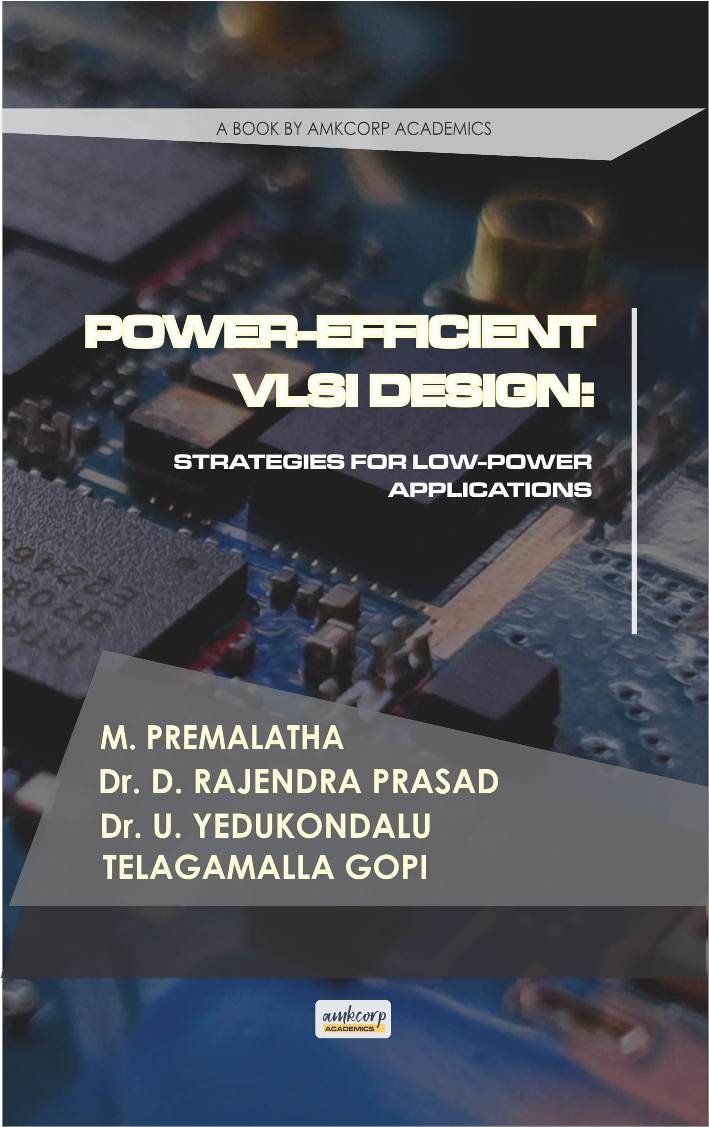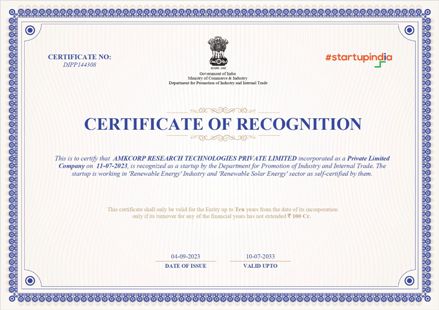



₹ 499.00
$ 40.00
ORDER PRINT
ORDER EBOOK

POWER-EFFICIENT VLSI DESIGN: STRATEGIES FOR LOW-POWER APPLICATIONS
AUTHOR(S) -
M. PREMALATHA, Dr. D. RAJENDRA PRASAD,
Dr. U. YEDUKONDALU, TELAGAMALLA GOPI
DOI – 10.61909/AMKEDTB032413
Genre/Subject – Electronics
Book code – AMKEDTB032413 pgs: 200
ISBN(P) – 978-81-970871-2-7
ISBN(E) – 978-81-970871-0-3
Published – 03/03/2024
AUTHOR(S)

M. PREMALATHA
Ms. M. Premalatha, currently working as Assistant Professor in Department of Electronics and Communication Engineering at Guru Nanak Institute of Technology, Hyderabad. She is pursuing Ph.D in IoT from Anurag University, completed Master of Technology in ECE from JNTU Hyderabad. Her Research interests include Information Centric Networks, Computer Vision, and Machine Learning.

Dr. D. RAJENDRA PRASAD
Dr. D. Rajendra Prasad is currently working as a Professor in Department of Electronics and Communication Engineering at St.Ann’s College of Engineering & Technology, Chirala. He has 24 years of professional experience. He holds Ph.D in Electronics and Communication Engineering from JNTUK, Kakinada, Master of Technology in DSCE from JNTUH, Hyderabad. His Research interests include Wireless Communications, Wireless Networks, and Internet of Things.

Dr. U. YEDUKONDALU
Dr. U. Yedukondalu did M.Tech (I&CS) from JNTU College of Engineering, Kakinada in 2007, and Ph.D in Low Power VLSI in 2017 from Nagarjuna University. He is presently working as a Principal and Professor, Department of ECE in MVR College of Engineering & Technology (A), Vijayawada, Andhra Pradesh, India. He is having total of 22 years’ experience. Guided 25 M.Tech projects and filed 5 Patents. He published about 25 technical papers in National/International Journals and Conferences. He is Fellow of IETE and member of ISTE. His research interest includes Low Power VLSI and Signal Processing.

TELAGAMALLA GOPI
Mr. Telagamalla Gopi currently working as Assistant Professor in Department of Electronics and Communication Engineering at Annamacharya Institute of Technology and Sciences, Hyderabad. He completed Master of Technology in VLSI System Design from Sree Dattha Institute of Engineering and Science, Jawaharlal Nehru Technological University, Hyderabad.. His Research interests include Digital Signal Processing and Image Processing and VLSI Design.
ABOUT BOOK / ABSTRACT
“Power-Efficient VLSI Design: Strategies for Low-Power Applications” is a comprehensive guide that explores the intricacies of designing energy-efficient integrated circuits, addressing the critical challenges and emerging opportunities in low-power VLSI design. This book serves as an indispensable resource for students, researchers, and industry professionals seeking to understand and implement power-efficient techniques in modern electronic systems.
Chapter 1: Introduction to Low-Power VLSI Design
- Provides an overview of low-power design principles and their significance in VLSI.
- Explores the historical perspective, challenges, and opportunities in power-efficient design.
Chapter 2: Fundamentals of Power Consumption in VLSI Circuits
- Discusses sources of power dissipation, including dynamic and static power consumption.
- Explores trade-offs and optimization techniques for reducing leakage power.
Chapter 3: Power Management Techniques
- Covers clock gating, voltage scaling, power gating, and other techniques for power optimization.
- Discusses dynamic voltage and frequency scaling (DVFS) and multiple threshold voltage design.
Chapter 4: Low-Power Design Methodologies
- Explores power optimization at different design levels, including RTL, gate, layout, and system levels.
- Discusses power-aware verification techniques for ensuring design reliability.
Chapter 5: Energy-Efficient Architectures
- Examines techniques such as pipelining, parallelism, and instruction-level parallelism for power reduction.
- Discusses power-efficient memory architectures and data path optimization techniques.
Chapter 6: Low-Power Digital Circuit Design
- Covers low-power arithmetic circuits, logic design techniques, and clocking schemes.
- Explores interconnect design and advanced flip-flop and latch designs for power efficiency.
Chapter 7: Low-Power Analog and Mixed-Signal Design
- Provides an overview of challenges in analog and mixed-signal design and discusses low-power ADC and DAC design.
- Explores energy-efficient RF circuit design and sensor interface design.
Chapter 8: Emerging Technologies for Low-Power VLSI Design
- Discusses emerging technologies such as spintronics, tunnel FETs, neuromorphic computing, and quantum computing for low-power applications.
Chapter 9: Low-Power Testing and Design for Testability
- Covers test challenges in low-power designs and techniques for power-aware testing.
- Discusses built-in self-test (BIST), test compression, fault diagnosis, and test pattern generation algorithms.
Chapter 10: Low-Power Design for IoT and Wearable Devices
- Explores energy constraints in IoT and wearable devices and discusses power-efficient processors and communication interfaces.
- Covers energy harvesting techniques and battery management strategies.
Chapter 11: Case Studies and Applications
- Presents case studies in low-power design for mobile devices, automotive electronics, data centers, medical implants, and green computing.
Chapter 12: Future Trends and Challenges
- Provides insights into future trends, challenges, and cross-disciplinary approaches for power optimization.
- Addresses ethical and environmental considerations in low-power VLSI design.
“Power-Efficient VLSI Design: Strategies for Low-Power Applications” offers a comprehensive overview of power-efficient design techniques, emerging technologies, and real-world applications, making it an essential resource for anyone involved in the design and development of energy-efficient electronic systems.




